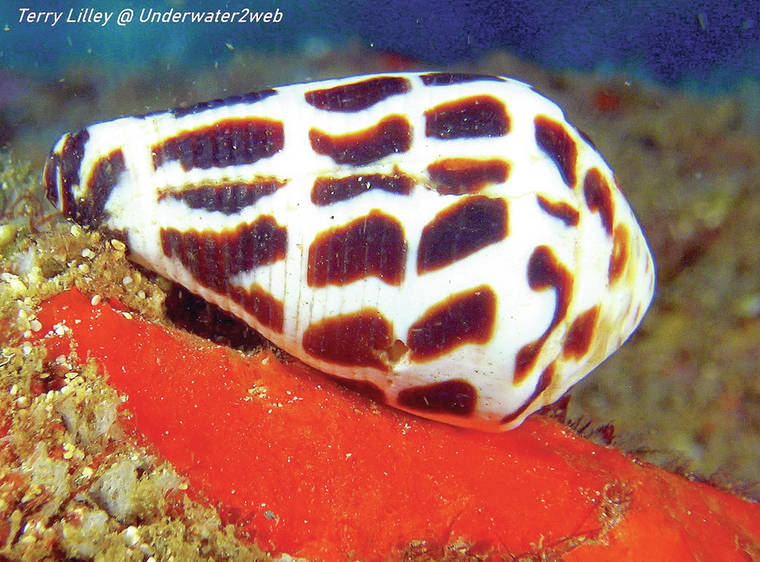Almost every jewelry store in Hawai‘i sells puka-shell necklaces, but very few people know where these puka shells come from! Hawai‘i is very unique because we have large surf that crashes directly onto our reefs and beaches, grinding up corals and shells. This is what makes our beach sand so beautiful, but it makes it very hard to find whole shells up on the beach. On tropical islands like Fiji or Tahiti there are outer barrier reefs that break up the energy of the surf and protect the islands in the lagoons, so when a shell dies it often washes up whole onto the beach for a shell collector to find. In Hawai‘i we have a lot of cone shells that are from two inches to four inches long but very thick. When the snail inside the shell dies or gets eaten, their thick shell gets ground up in the large surf and the only part that survives is the round top of the shell. This washes up onto the beach and is known as a puka shell.
Almost every jewelry store in Hawai‘i sells puka-shell necklaces, but very few people know where these puka shells come from! Hawai‘i is very unique because we have large surf that crashes directly onto our reefs and beaches, grinding up corals and shells. This is what makes our beach sand so beautiful, but it makes it very hard to find whole shells up on the beach. On tropical islands like Fiji or Tahiti there are outer barrier reefs that break up the energy of the surf and protect the islands in the lagoons, so when a shell dies it often washes up whole onto the beach for a shell collector to find. In Hawai‘i we have a lot of cone shells that are from two inches to four inches long but very thick. When the snail inside the shell dies or gets eaten, their thick shell gets ground up in the large surf and the only part that survives is the round top of the shell. This washes up onto the beach and is known as a puka shell.
The Hebrew cone shell when it is alive out on the coral reef usually hides under rocks and feeds on marine worms. The cone is a type of marine snail, and Hebrew cone is a beautiful, black-and-white color. Most cone shells have a poisonous spine and are capable of delivering a painful sting if a diver tries to grab a live specimen. In old Hawai‘i they were called “dizzy shells” due to how you felt if you got stung. Most divers that see these shells when they have died see them lying on the sea-floor in little holes in the reef that they have been washed into by the surf before they are ground up by the waves and washed up onto the beach.
It is good to leave the empty cone shells out on the reef because they sometimes become homes to the hermit crabs. Hermit crabs do not make their own shells, so they crawl into empty shells they find on the sea-floor.
As they grow in size they have to leave their shell and find a larger one. Some hermit crabs only like to live in old cone shells, and a single Hebrew cone can be home to several different hermit crabs before it is ground up in the surf and worn on someone’s neck as a puka-shell necklace!
You can see pupu‘ala in action in my movie “The World’s Guide To Hawaiian Reef Creatures” up on my marine science educational web page, underwater2web.com.
We have lots of full-length, marine-science movies that are super good to educate our younger school kids about the sea and all of the special creatures that live there.
Aloha from under the surf.
•••
Terry Lilley is a marine biologist living in Hanalei. He is co-founder of Reef Guardians Hawai‘i, a nonprofit on a mission to provide education and resources to protect the coral reef. To donate to Reef Guardians Hawai‘i go to reefguardianshawaii.org.



